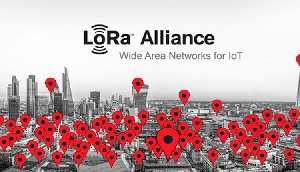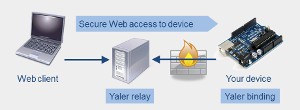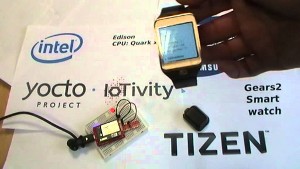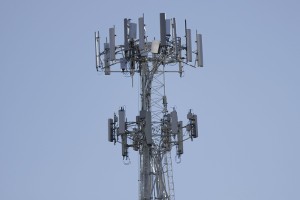Wind River’s Rocket is a free real-time operating system for 32-bit microcontrollers, specifically designed to help you build intelligent embedded devices quickly and easily.
Rocket is a fast, reliable, secure platform designed to help accelerate your development and deployment of Internet-of-Things applications. It’s easy to use, helping to make it possible for users and developers to take advantage of the opportunities of the IoT even if they are new to the complexities of developing smart, connected, embedded IoT systems.
With a robust set of capabilities, the Rocket platform gives IoT developers a best-in-class, scalable, real-time operating system for 32-bit microcontrollers. It’s ideal for building embedded edge-node devices in Internet-of-Things applications, or sensors, wearable technology, industrial controllers and other resource-constrained yet powerful, connected IoT devices.
The technology behind Rocket is commercially proven, based on Wind River’s industry-leading experience with its other real-time operating systems such as VxWorks, and it is optimised for strong efficiency in resource-constrained systems. Rocket is tuned for deployment on small, memory-constrained and power-constrained devices with as little as 4kB of storage.
The Rocket OS kernel provides an extensive suite of services, including advanced power management and interrupt handling, dynamic memory management, and advanced multithreading with inter-thread data communications and synchronisation.
Rocket makes your development of embedded IoT applications and devices easier, simplifying or eliminating many of the common challenges associated with developing embedded device firmware from scratch.
Various hardware types are supported, such as ARM architecture as well as the Intel architecture used by platforms such as Intel’s Quark system-on-chip family. Many popular 32-bit microcontrollers and development platforms are supported by Rocket, including the Intel Quark X1000 system-on-chip and Intel’s Galileo Gen2 development board based on this SoC.
The Freescale Freedom K64F, a low-cost development platform for Freescale Kinetis K64, K63 and K24 microcontrollers is also supported, and Wind River continues to expand support for different hardware platforms.
However you can also get started without any hardware at all – since Wind River provides a free hardware simulator integrated into the App Cloud IDE. This emulation platform is based on QEMU, a generic open-source machine emulator and virtualiser, which can use your PC to run operating systems and applications designed for a different architecture such as an ARM microcontroller.
This hardware simulation capability means you can prototype systems without the need to purchase any hardware, and you can focus your attention on building applications without availability of hardware becoming a bottleneck.
This helps free development teams from the limitations that can traditionally be dictated by hardware-related project dependencies, making it easier to work with Agile development practices in the overlapping hardware-software development industry.
Wind River provides online community support for the Rocket ecosystem in the form of the Rocket Developer Zone and Developer Forum, where you can learn from other experts how to use Rocket and App Cloud to rapidly build embedded and IoT solutions.
You can access documentation for the Rocket platform online to help you develop your application, and use the forum to ask questions, answer questions, or share your experiences of development using Rocket and App Cloud.
Integrated with Wind River’s Helix App Cloud, Rocket enables developers to easily compile and deploy their code, securely building and delivering applications to local devices or to connected devices already deployed in the field.
App Cloud is a cloud-based software development environment which makes it easy and convenient to get started developing applications on the Rocket OS. You can get started developing your Rocket IoT applications in minutes, simply by creating a free App Cloud account and connecting your target hardware, or trying the hardware simulation provided in App Cloud.
The free App Cloud development environment is a new kind of software development platform, an IDE based in the cloud, that removes many of the traditional complexities of building applications for embedded systems. App Cloud makes it easy to start writing and debugging your Rocket IoT applications in minutes from any Web browser, with access to remote device hardware targets and support for C, C++ and Node.js development as well as runtime debugging.
Furthermore, App Cloud greatly simplifies the process of developing software for embedded devices, allowing you to dynamically build and manage SDKs on a variety of hardware platforms, all from a single, secure, cloud-based environment, and it helps makes the development of software for embedded and IoT applications more accessible, without any deep understanding of the underlying OS or hardware required. You don’t have to muck around compiling or installing toolchains and software to support development and code deployment on your embedded hardware, since the cloud takes care of this for you.
Getting started using App Cloud is easy. You simply sign up for free, and you’re able to create a new project, set up your device SDK and download the device image. Then you can write or import code, build, run and debug that code to get started creating your application, all within the cloud. The free version of App Cloud has no time limitations, and it offers up to 250 Mb of storage for your application projects in the cloud, with only predefined SDKs supported.

There is also a paid, premium version of App Cloud available for enterprise users, with greater storage and the ability to add and customise SDKs as needed. This also offers enterprise-level support for Rocket and App Cloud, leveraging Wind River’s deep expertise in embedded devices and operating systems to support commercial customers and their IoT product development.
Wind River’s Rocket is one of many IoT solutions and is worth consideration. However it is only one of many on the market, all of which creates an almost infinite combination of possibilities – and we can help your organisation find the best possible outcome for your situation.
Here at the LX Group we have end-to-end experience and demonstrated results in the entire process of IoT product development, and we’re ready to help bring your existing or new product ideas to life. Getting started is easy – click here to contact us, telephone 1800 810 124, or just keep in the loop by connecting here.
LX is an award-winning electronics design company based in Sydney, Australia. LX services include full turnkey design, electronics, hardware, software and firmware design. LX specialises in IoT embedded systems and wireless technologies design.
Published by LX Pty Ltd for itself and the LX Group of companies, including LX Design House, LX Solutions and LX Consulting, LX Innovations.

 The latter is more flexible, but because it requires the radio receiver to be kept online listening for new downlink messages all the time, this is the most power-inefficient mode compared to the former scenarios where the radio can be powered down. This is another way that the LoRaWAN protocol helps to maintain strong power efficiency in the endpoint devices.
The latter is more flexible, but because it requires the radio receiver to be kept online listening for new downlink messages all the time, this is the most power-inefficient mode compared to the former scenarios where the radio can be powered down. This is another way that the LoRaWAN protocol helps to maintain strong power efficiency in the endpoint devices.






